Bamboo & 90% Recycled Waste: Kerala Architect Builds Green Home in 4 Months!
“We dug out a 5 ft pit, placed bricks/broken tiles in it and covered it with a 5-inch layer of soil. Then we planted a species of grass and arrowroot on it, creating an artificial wetland that recharges groundwater.”

We all dream of a beautiful home that we can call our own. This is perhaps a shared aspiration that we earnestly work for. But, there are several choices that one needs to make to ensure that in the process of building a perfect home, we do not cause damage to the environment.
Reports say that this sector accounts for almost 25 to 40 per cent of the world’s total carbon emissions! Research further shows that 50 per cent of the climatic change and 50 per cent of landfill waste can be attributed to construction processes.
Additionally, the sector is responsible for 40 per cent of drinking water pollution and 23 per cent of air pollution.
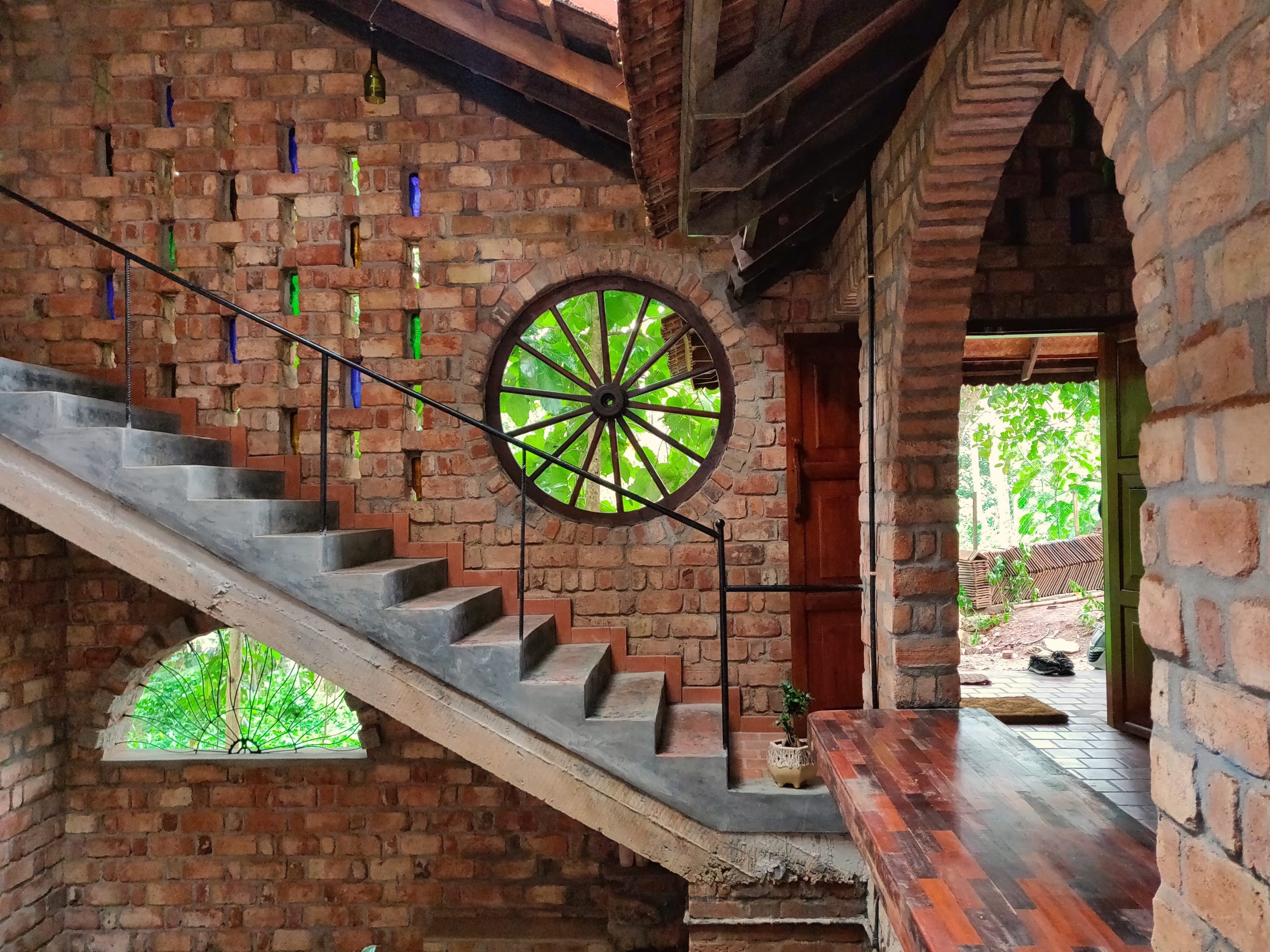
But, Ashams Ravi, a Thiruvananthapuram based architect nullifies all our preconceived notions with his home. Using recycled materials that include items like beer bottles and bricks and doors sourced from sites where buildings have been demolished, he built his green home as a natural extension of the environment.
The house is built using techniques that are eco-friendly, keeping the carbon footprint at a minimum. The most interesting factor was that the house was built in a matter of four months!
As a practising architect, who is involved in the construction of sustainable buildings, he naturally took the green route when it came to constructing his own home.

“With floods and landslides that Kerala faced in 2018, I was sure that my house should be consciously built without causing much damage to the environment. We bought the land early last year and started construction in April 2019. By August, we were done with the construction,” says the 27-year-old architect.
How the Sustainable Home was Built
The 2500 sq. feet home stands on a plot which is 13 cents in size (5662.8 square foot). It’s important to point out how conscious they have been in ensuring there is no damage caused to the ecology and how they accommodated their plans to build around nature.
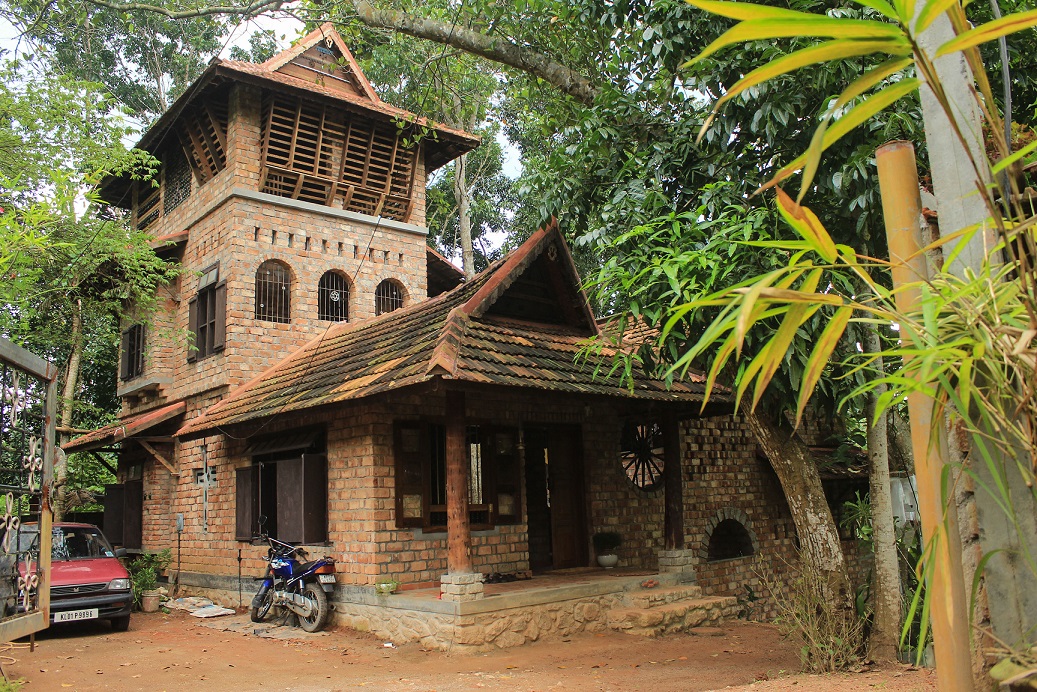
“The land we bought had a slant. However, we decided against digging up the soil to level it and just went ahead with the construction process. Also, there was a big mahogany tree which was right in the middle of the plot but we built around the tree and it is a part of the home now,” says Ashams.
The house has two floors in addition to the ground floor and each floor has two levels. Also, 90 per cent of the materials used in the construction process are recycled.
“We thought of reusing materials from demolished building sites and someone’s trash became a treasure for us. I sourced materials like timber, Mangalore pattern tiles, bricks, and stone. The use of cement is very minimal as the manufacturing cycle starting from the production of limestone in the quarry to its transportation and use has a lot of carbon footprint,” he explains.

Renewable materials like bamboo form the skeleton of the building. Research shows that bamboo has a greater tensile strength of 28,000 pounds per sq inch, as opposed to steel’s which is 23,000 pounds per sq. inch. Ashams says that this also helps in ensuring that local tribes benefit by selling the bamboo.
“We treated the bamboo with borax as it helps in crystallising the fat content that most insects are after. Similarly, we’ve also used the trunks of coconut trees that have been chopped down. We use them as pillars once it has been treated the same way,” he says.
Items like beer bottles have been repurposed to make lampshades around the house. There is an entire wall in the house that is made from recycled beer bottles and plastered with mud and lime.
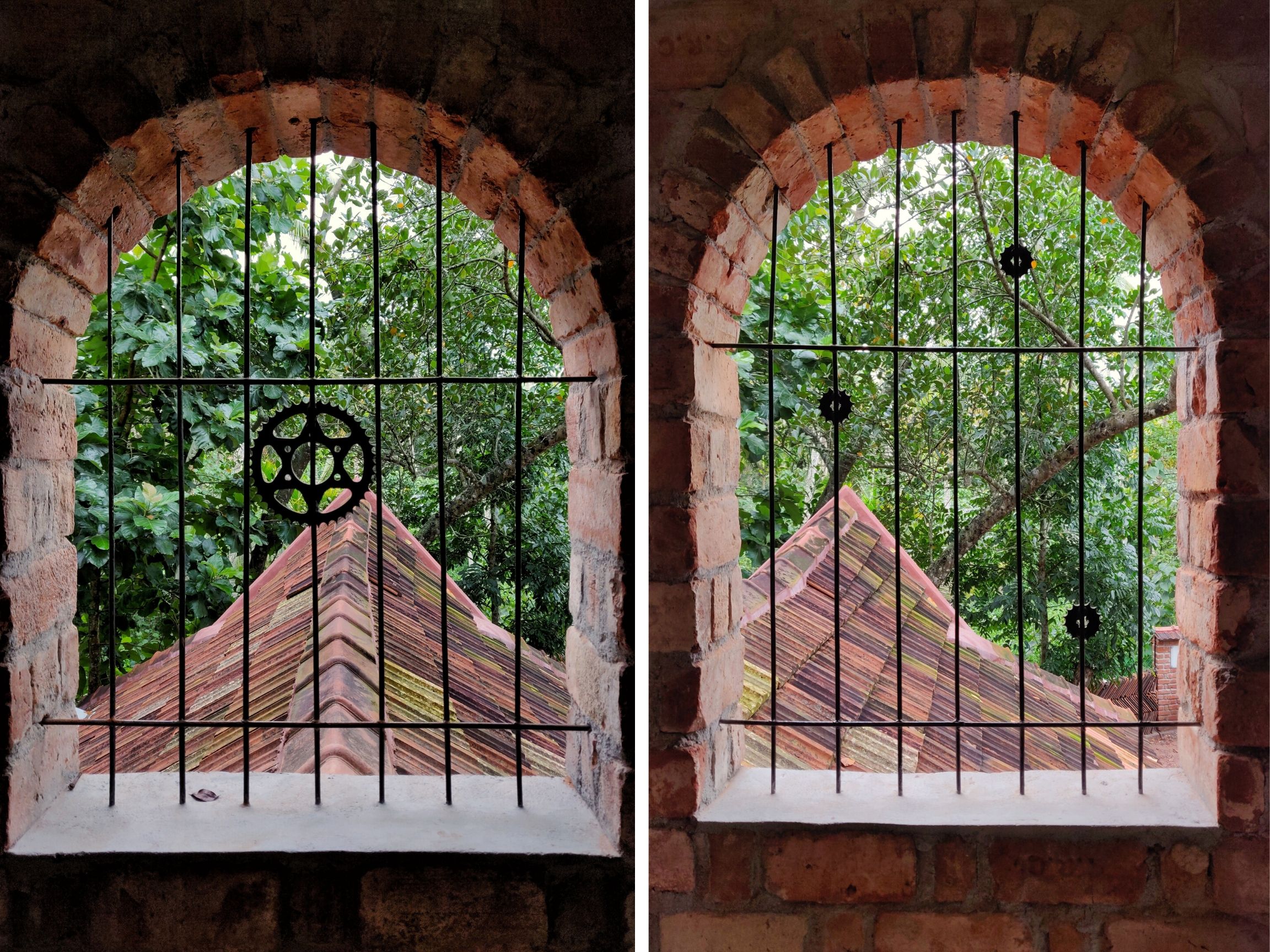
Ashams also has a good network of people who sell materials from demolition sites. In this manner, they were able to obtain a few eclectic pieces that have added a certain rustic charm to the house.
“The Palace of the Diwan of Travancore was privately owned and when it was later demolished, I visited the site. I found a large door which was shabbily painted over. So, I decided to scrape off the paint and now it is the main door of the house. Also, there was a large window with a wooden frame, which was again painted over. Once the paint was removed from the railings, I found that they were made of brass. So, I let it be as it is since brass is not prone to corrosion,” he says.
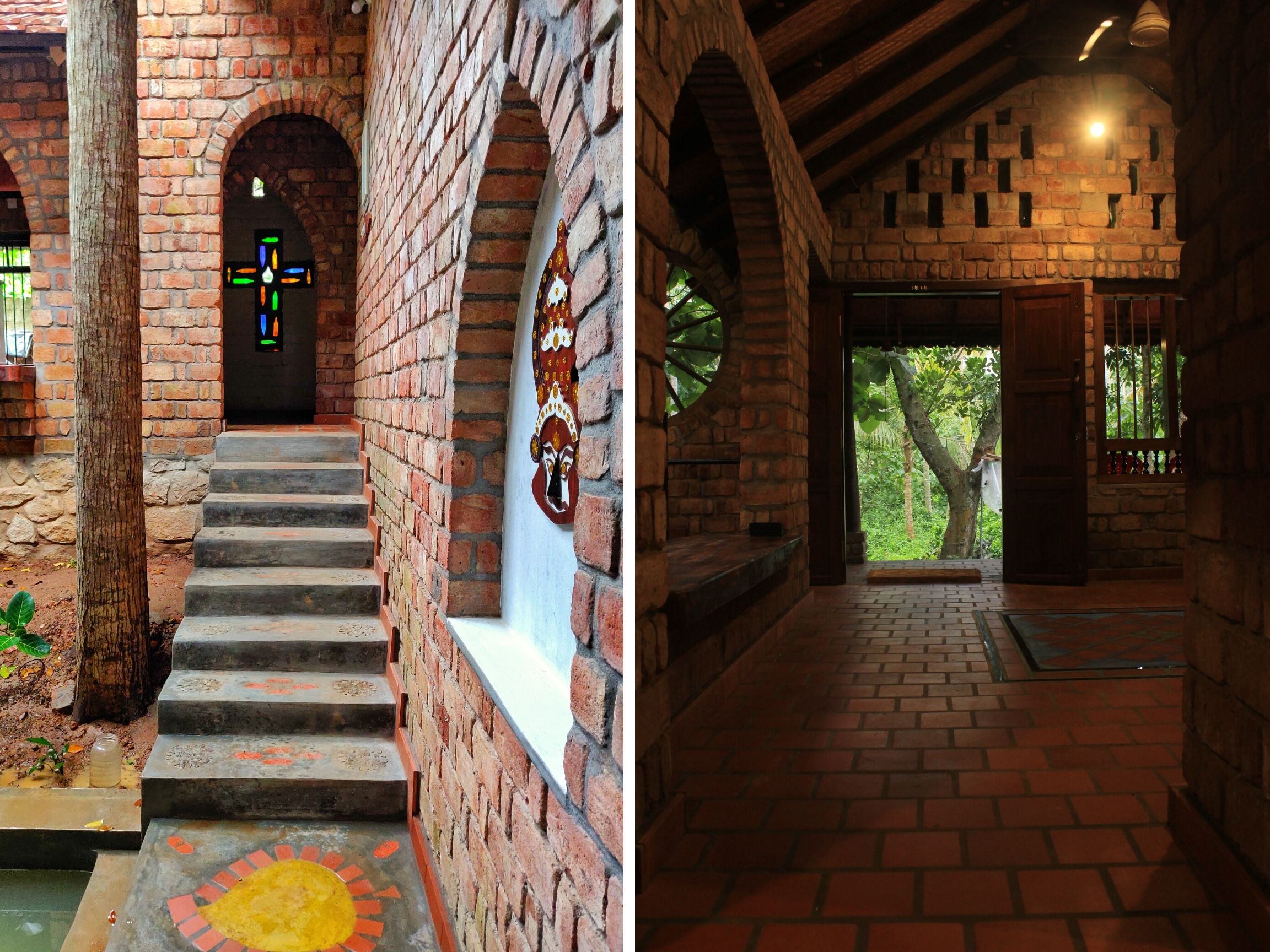
Ashams also managed to source a large horse cartwheel used in races during Pongal, a harvest festival, celebrated in Tamil Nadu. The wheel has now been used as a window frame in the home. The floors in the house comprise of terracotta tiles and black oxide. There is a hall on the top floor which has been constructed for family gatherings. The floor here is made from cow dung which is layered over bamboo slabs and jute sacks soaked in very little cement grout.
Conservation and Management around the House
In addition to upcycling building materials and using sustainable materials, the techniques used to build the home ensure that resources are judiciously used.
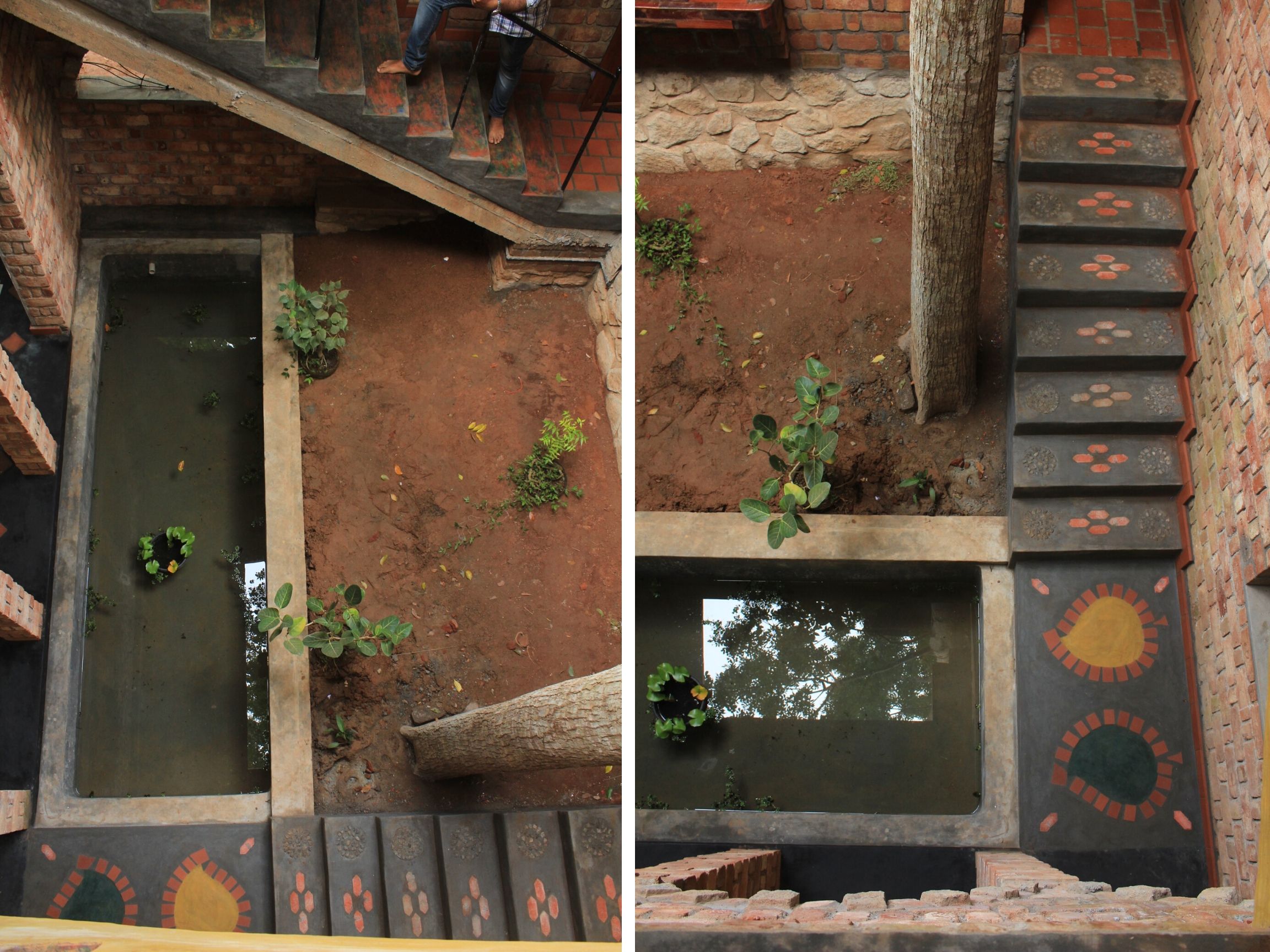
Take for example the ‘Rat Trap bond’ technique in which the bricks are arranged vertically, as opposed to horizontally by maintaining a hollow space within the wall. This technique not only involves lesser bricks but also reduces the cost of masonry by 30 per cent.
However, the most advantageous feature is the fact that it acts as a thermal insulator, meaning the interiors stay cooler in the summers, while in the winter it is warmer. “The house is almost 3 degrees cooler in the summers and at night, we don’t even need to switch on the fans. This obviously ends up saving electricity,” he says.
Talking about the bricks on the wall which remain exposed adding an old world charm, the young architect says, “Plastering doesn’t really add to the foundational strength of the building so we did not use it.”

The house also has a biodigester in place which is used to compost their kitchen waste. The waste from the toilet is also connected to this biodigester (instead of a septic tank) through pipes that run underground.
The courtyard provides additional ventilation and acts as a space where people can meet up and celebrate different occasions. Since there is a slight slant in the plane, Ashams decided to do something interesting.
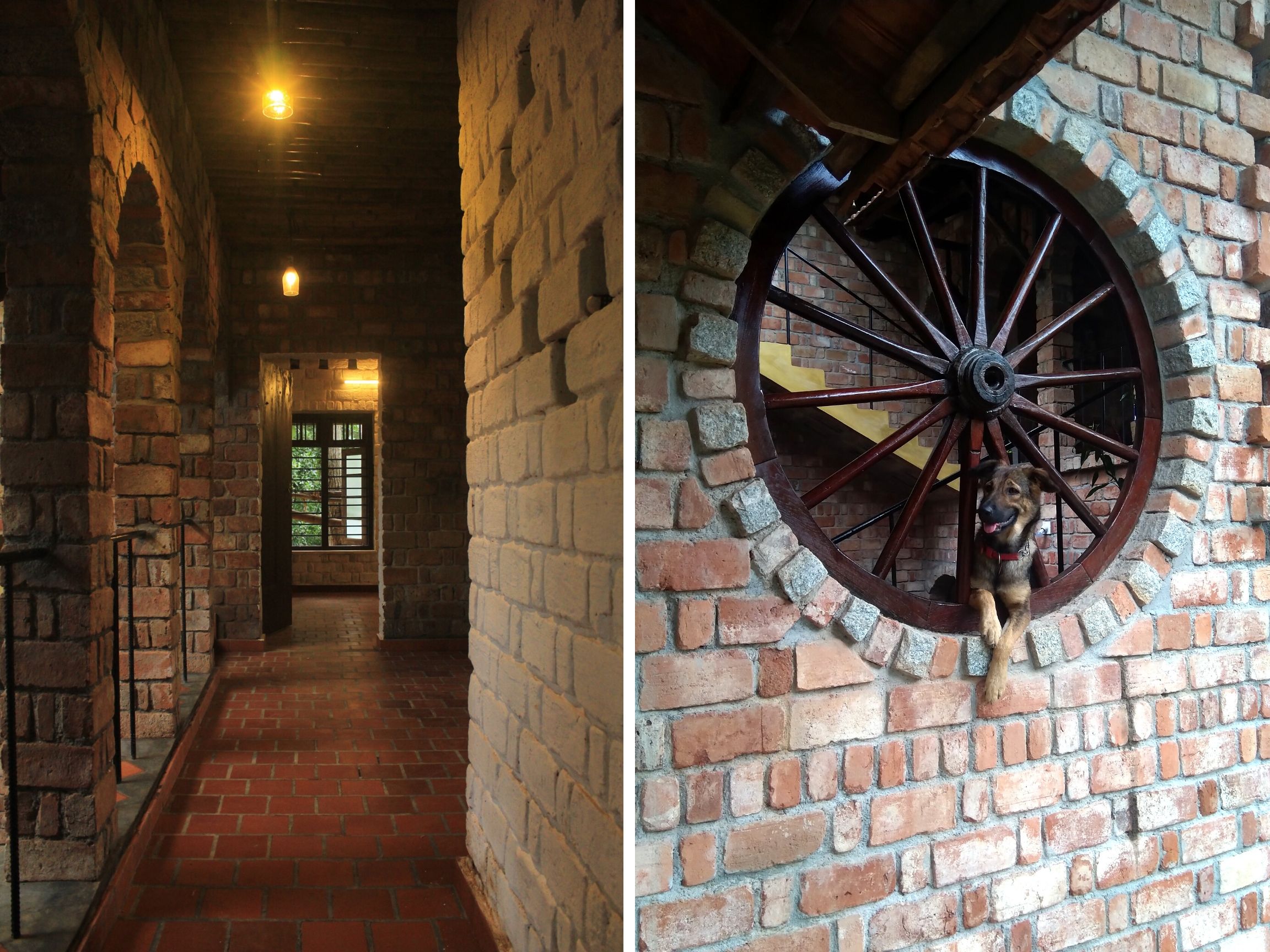
On the downward sloping plane, he constructed a water tank to harvest rainwater. To ensure that the overflow does not go to waste during the monsoon, he created a drainage hole which lets out the water to a constructed wetland which helps recharge the groundwater.
“We dug out a 5 ft pit and placed bricks and broken tiles to mimic the natural aquifers. We have covered that with a layer of soil which is five inches thick and have planted a species of grass and arrowroot. This prevents the water from getting wasted as surface run-off,” he says.
Influence of COSTFORD
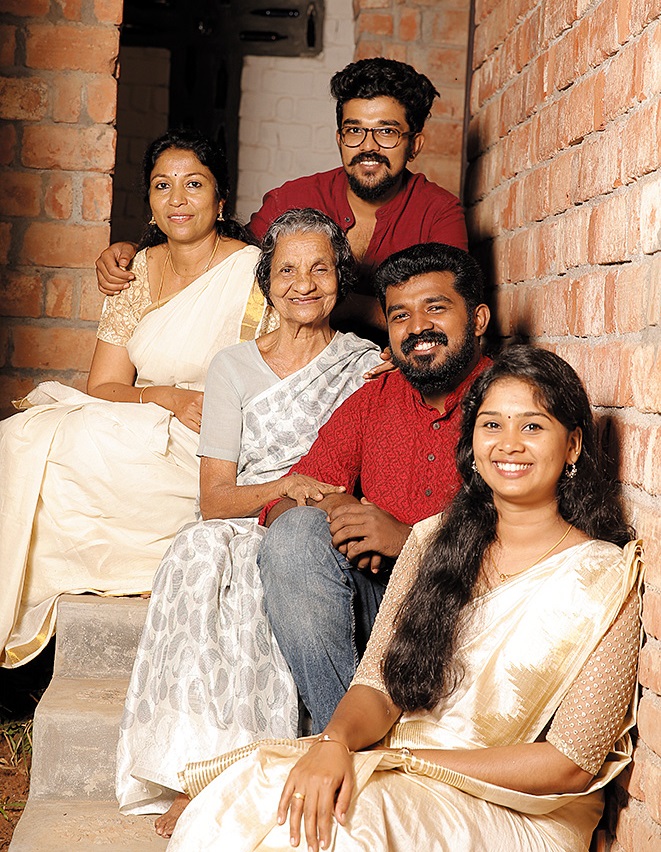
The young architect picked up most of his sustainable building techniques skills from The Centre of Science and Technology for Rural Development (COSTFORD). He has been working with the organisation for close to three years now and joined them full-time when, in mid-2017, he graduated from Prime College of Architecture and Planning in Nagapattinam.
COSTFORD is a non-profit organisation founded in 1985 by Kerela’s former CM, C. Achutha Menon; Dr. KN Raj, Economist and Chairman of Centre for Development Studies, Social activist TR Chandradutt and legendary architect known for his sustainable building practices, Laurie Baker.

Architecture is at the heart of the organisation’s operations and they build sustainable homes for the underprivileged under rural development programmes like Pradhan Mantri Awas Yojana (PMAY). They also take on projects with clients who can afford to pay them for their services of designing and constructing environmentally conscious homes for them.
Roadblocks to Building a Green Home and Looking Forward
Although the house came to life in four months, it wasn’t a bed of roses for Ashams.
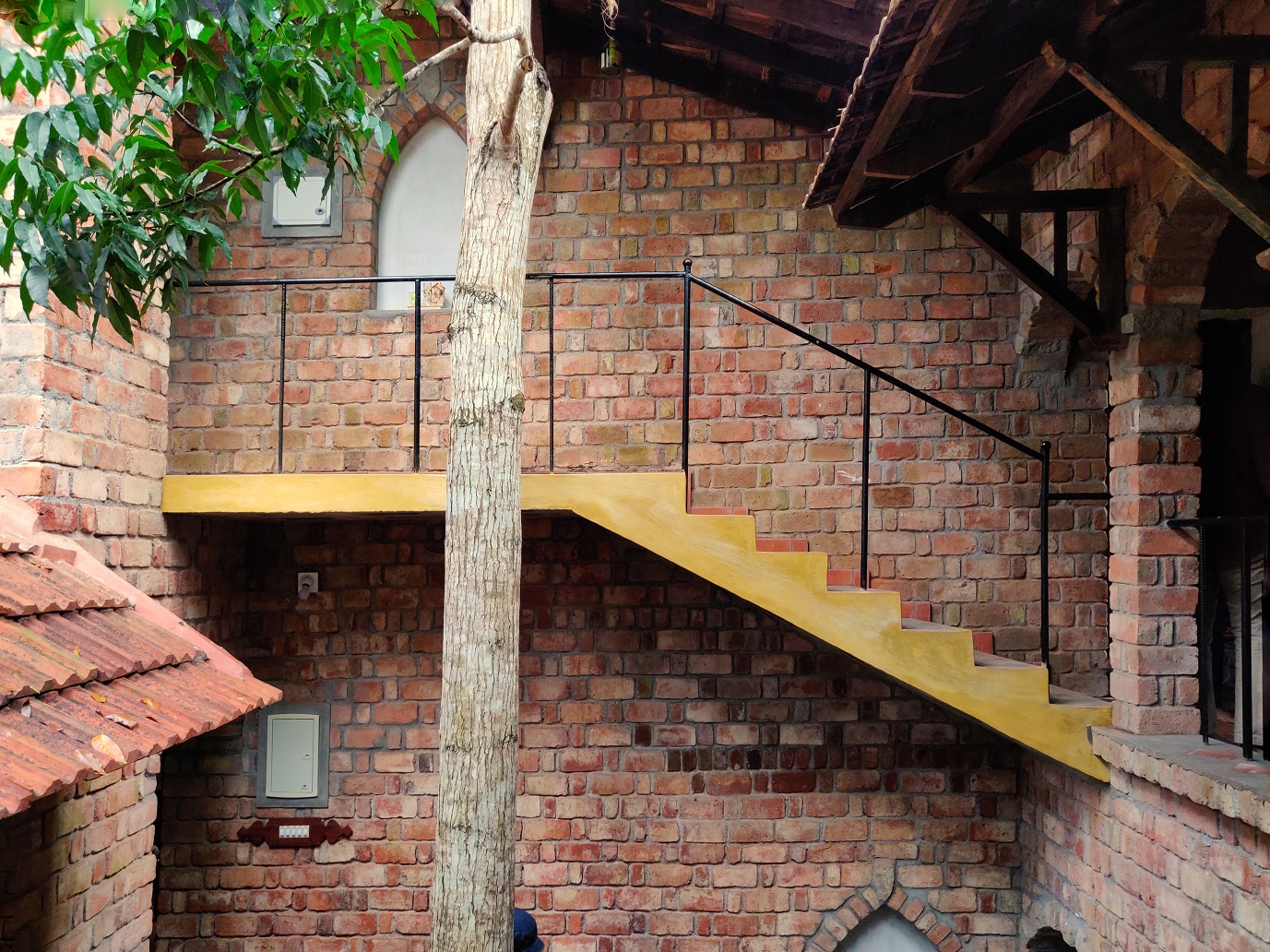
“I think one of the key challenges was that we didn’t really have a final plan on paper. This was because we were constantly modifying and designing parts of the house based on the items that we found on demolition sites and other places. So, we had to be quick on our feet,” he says.
Regardless, he has built a home that has caught the eyes of many. One of these people was Arvind Mohan, a 26-year-old Dhrupad musician based out of Thiruvananthapuram who wanted to build an eco-friendly home and approached COSTFORD. Ashams then became one of the main architects working on the project.
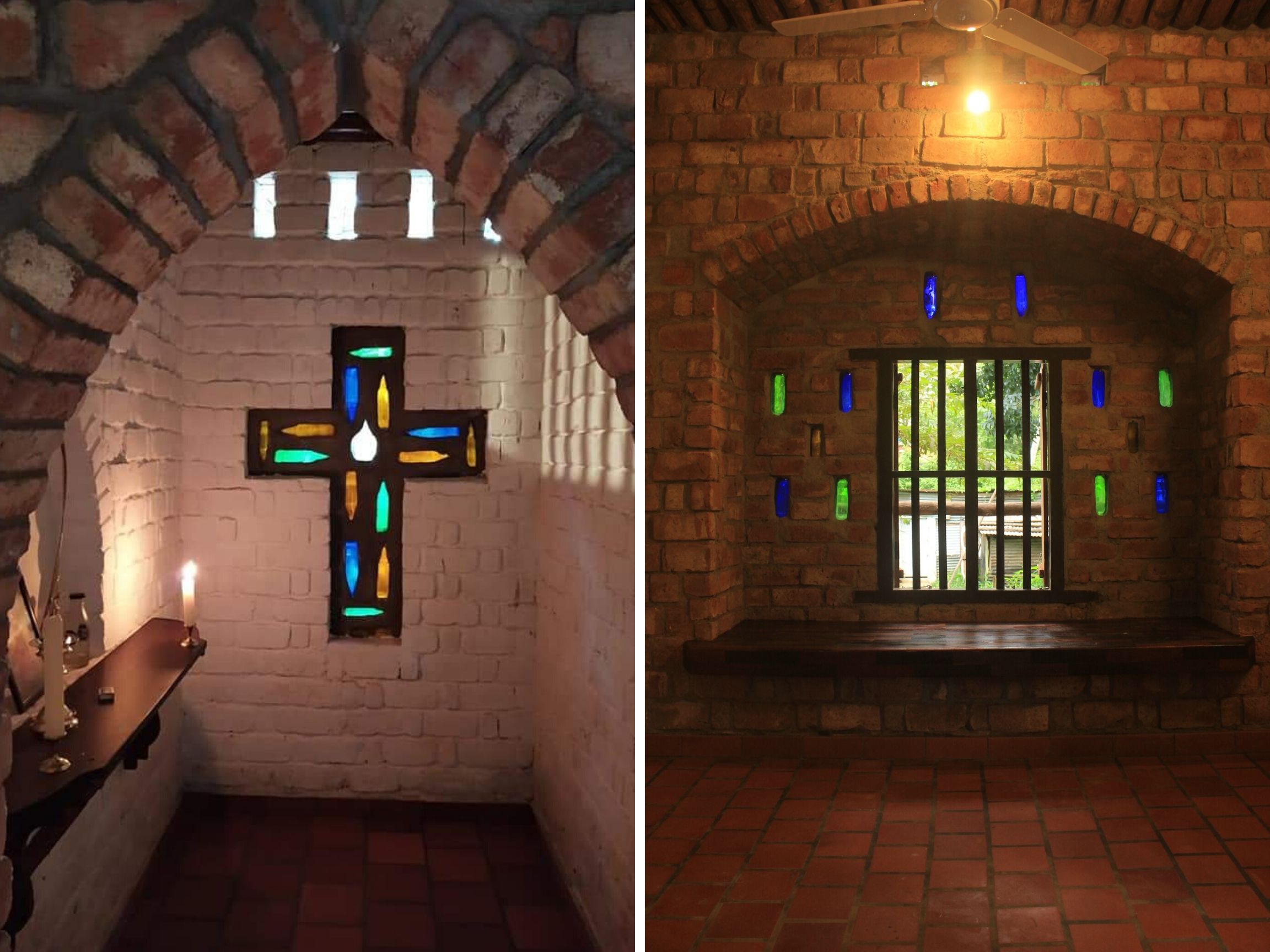
One day, when Arvind visited Ashams’ home, he was completely mesmerised.
“Most of the elements have also been incorporated in my building plan. But one thing that really caught my eye was their beautiful courtyard and I have told him that I want something similar in my house. My house too is built using materials found in demolition sites. I wanted a home that is eco-friendly and built around nature. I am glad that I am getting that and I cannot wait to see my house completed,” says Arvind.
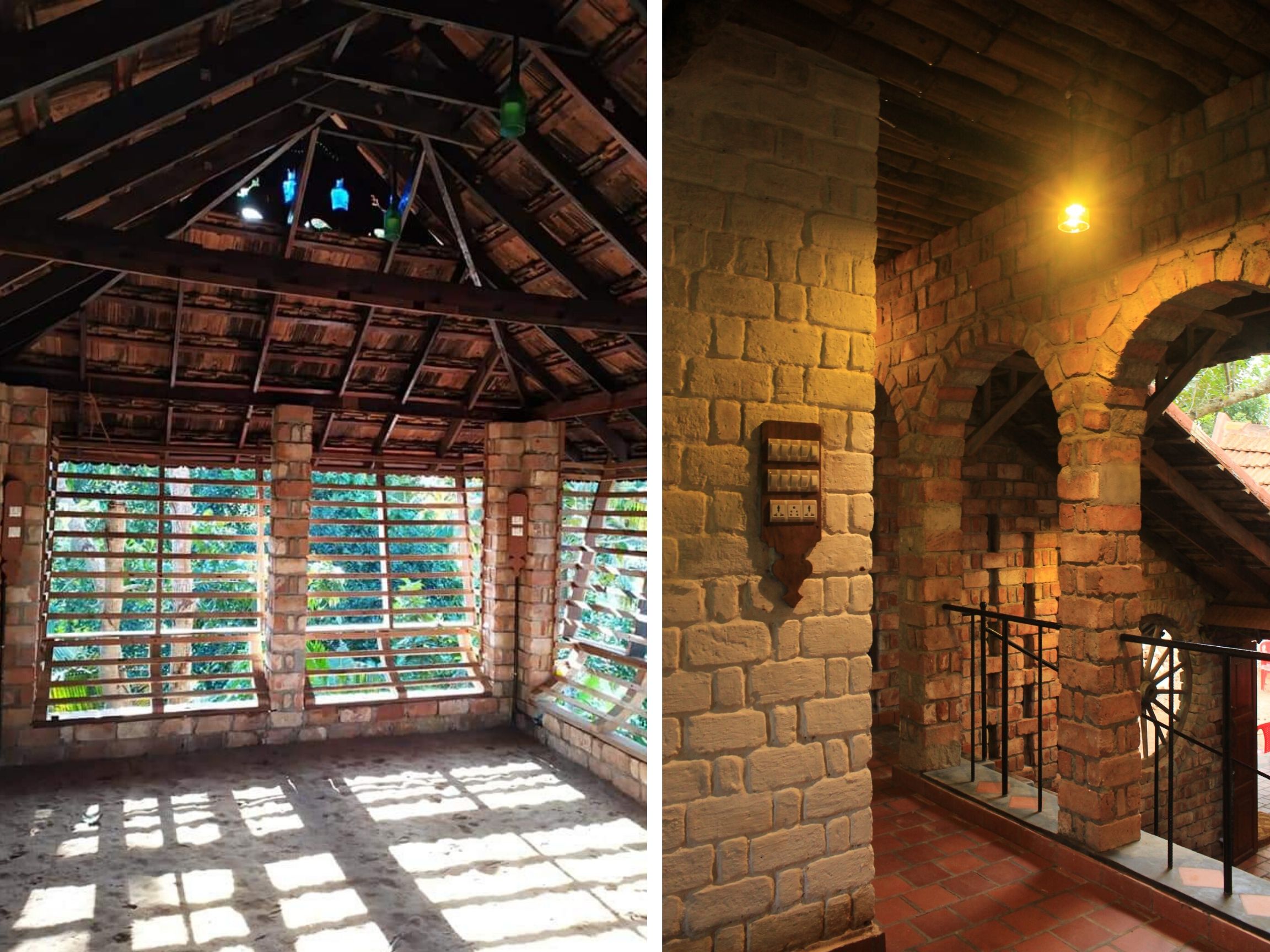
Ashams is happy that clients and other people have shown interest and have been inspired by his home.
“Whenever we go about any activity, one must remember that only what is necessary should be taken from the environment. We must remember that mother earth is not something that is given to us by our ancestors but something that we have borrowed from our future generation. We need to give up our greed for a cleaner, better planet,” he says signing off.
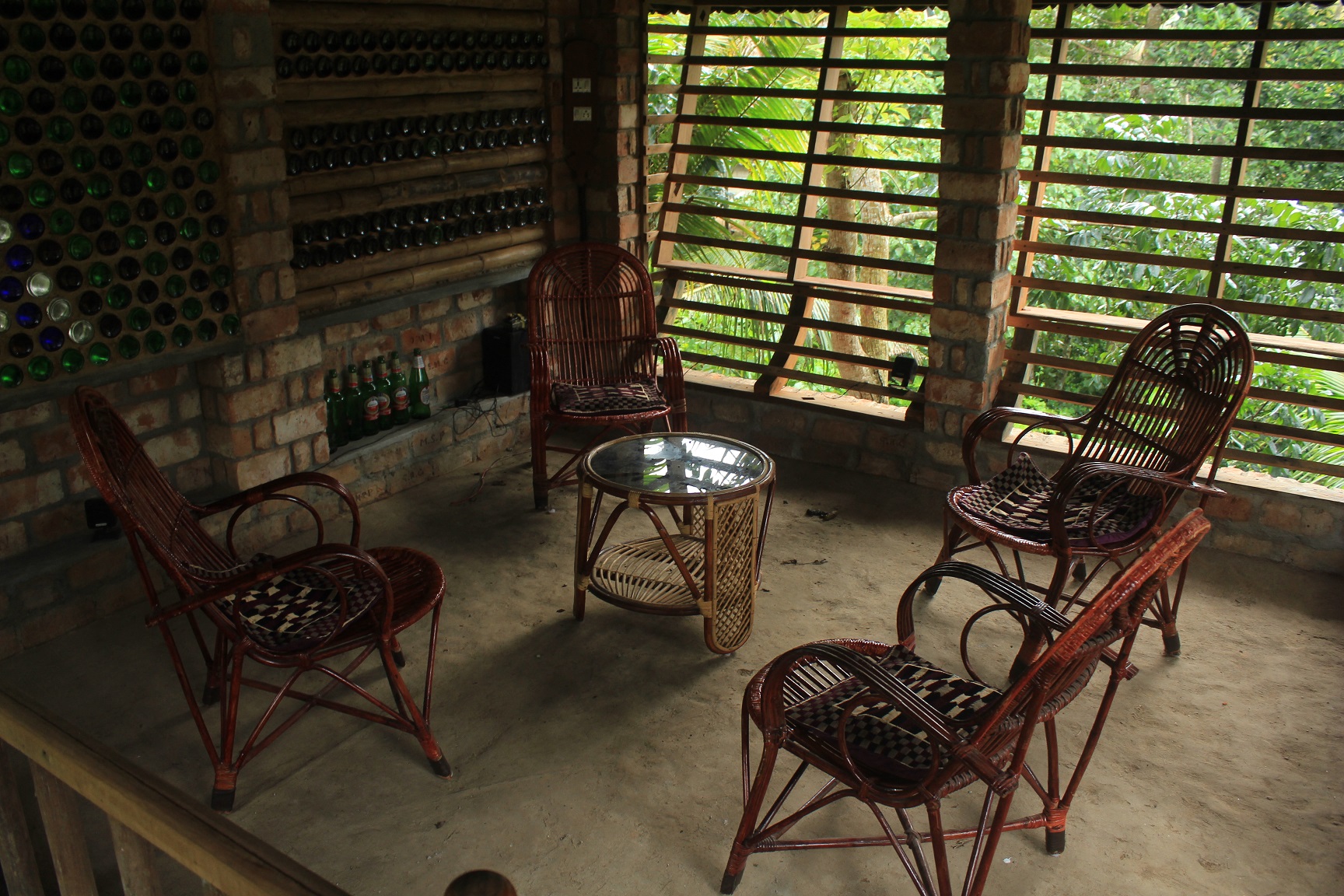
Also Read: Made With Clay & Waste, Gujarat Architect’s Buildings Are 50% Cheaper & Cooler!
(Edited by Saiqua Sultan)
Like this story? Or have something to share?
Write to us: [email protected]
Connect with us on Facebook and Twitter.
If you found our stories insightful, informative, or even just enjoyable, we invite you to consider making a voluntary payment to support the work we do at The Better India. Your contribution helps us continue producing quality content that educates, inspires, and drives positive change.
Choose one of the payment options below for your contribution-
By paying for the stories you value, you directly contribute to sustaining our efforts focused on making a difference in the world. Together, let’s ensure that impactful stories continue to be told and shared, enriching lives and communities alike.
Thank you for your support. Here are some frequently asked questions you might find helpful to know why you are contributing?


This story made me
-
97
-
121
-
89
-
167











